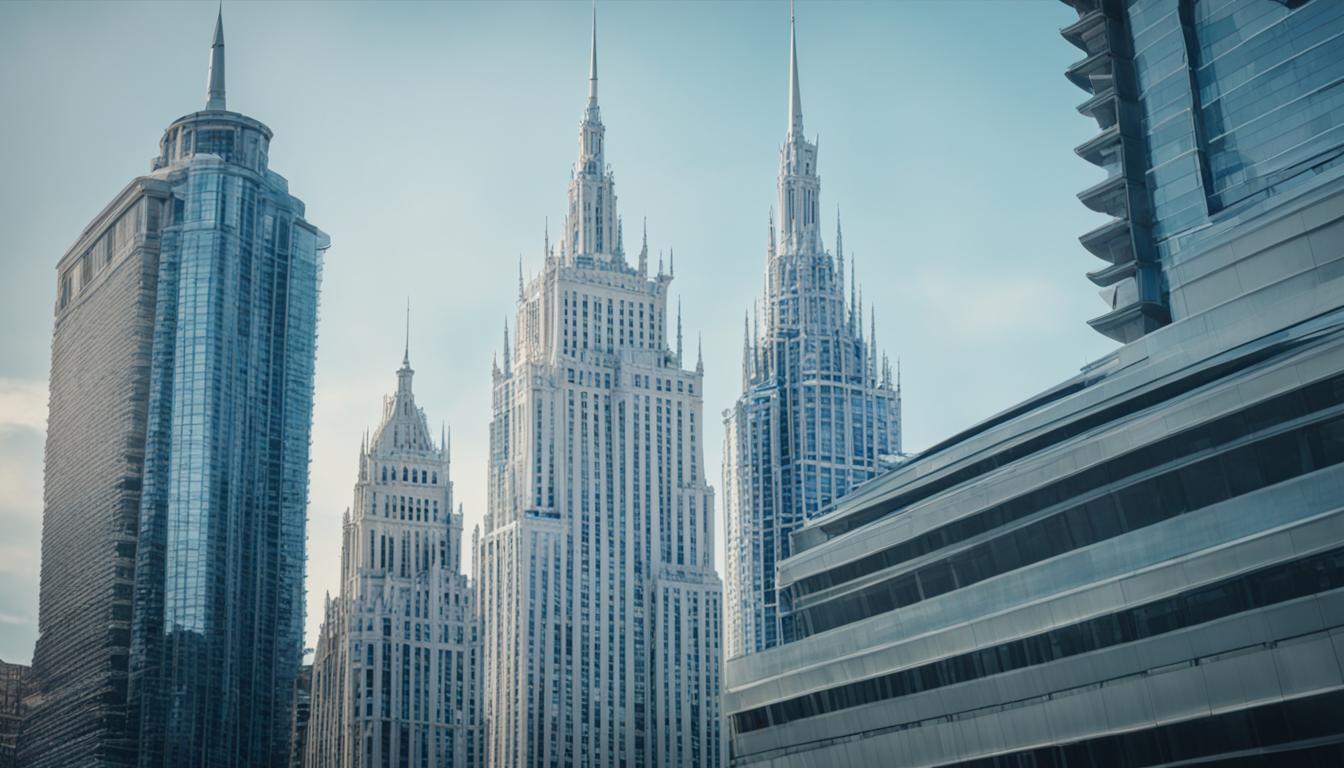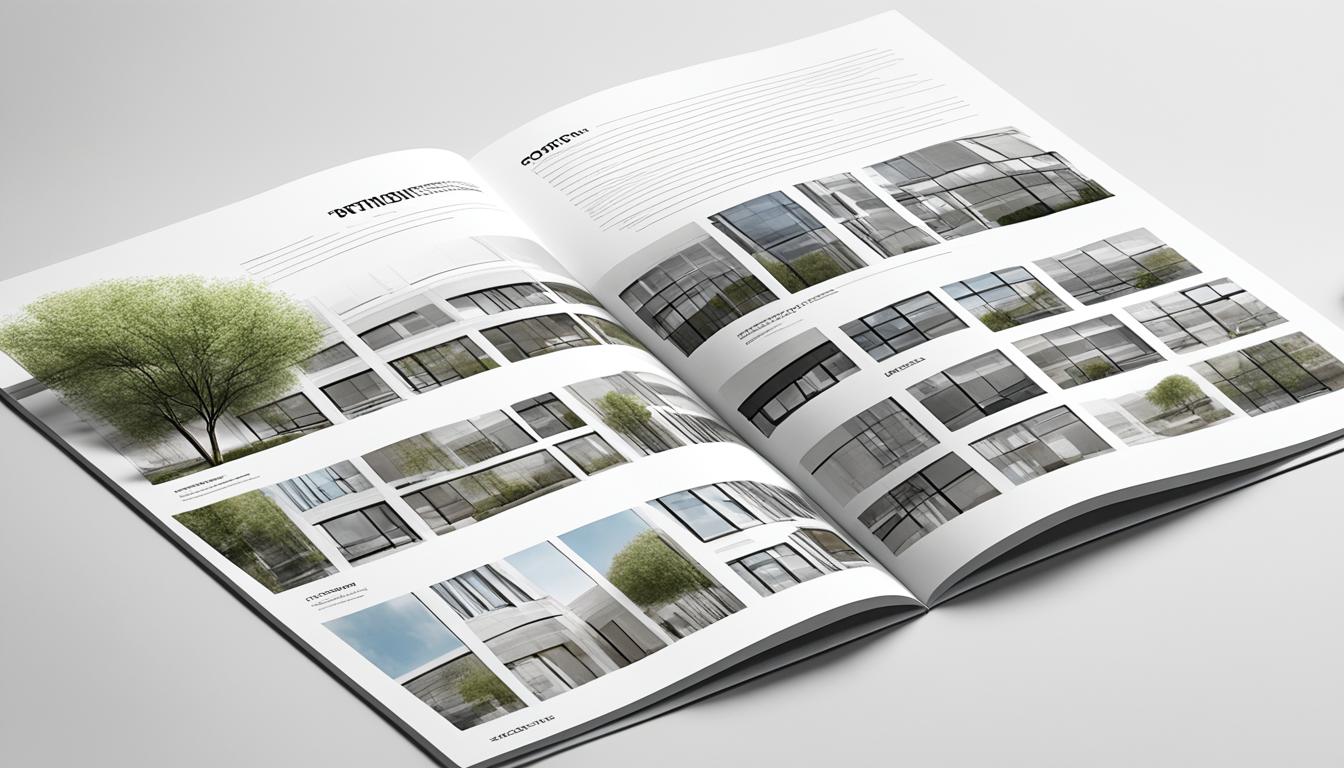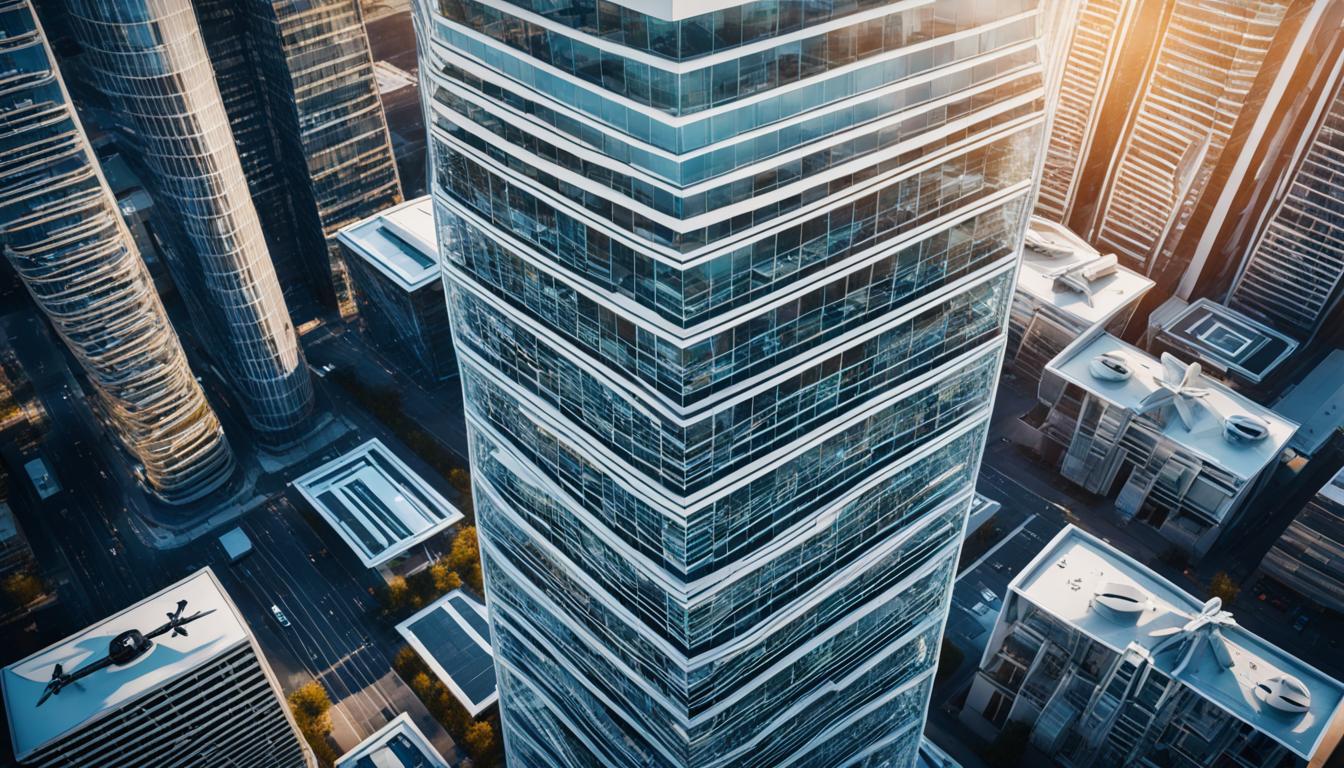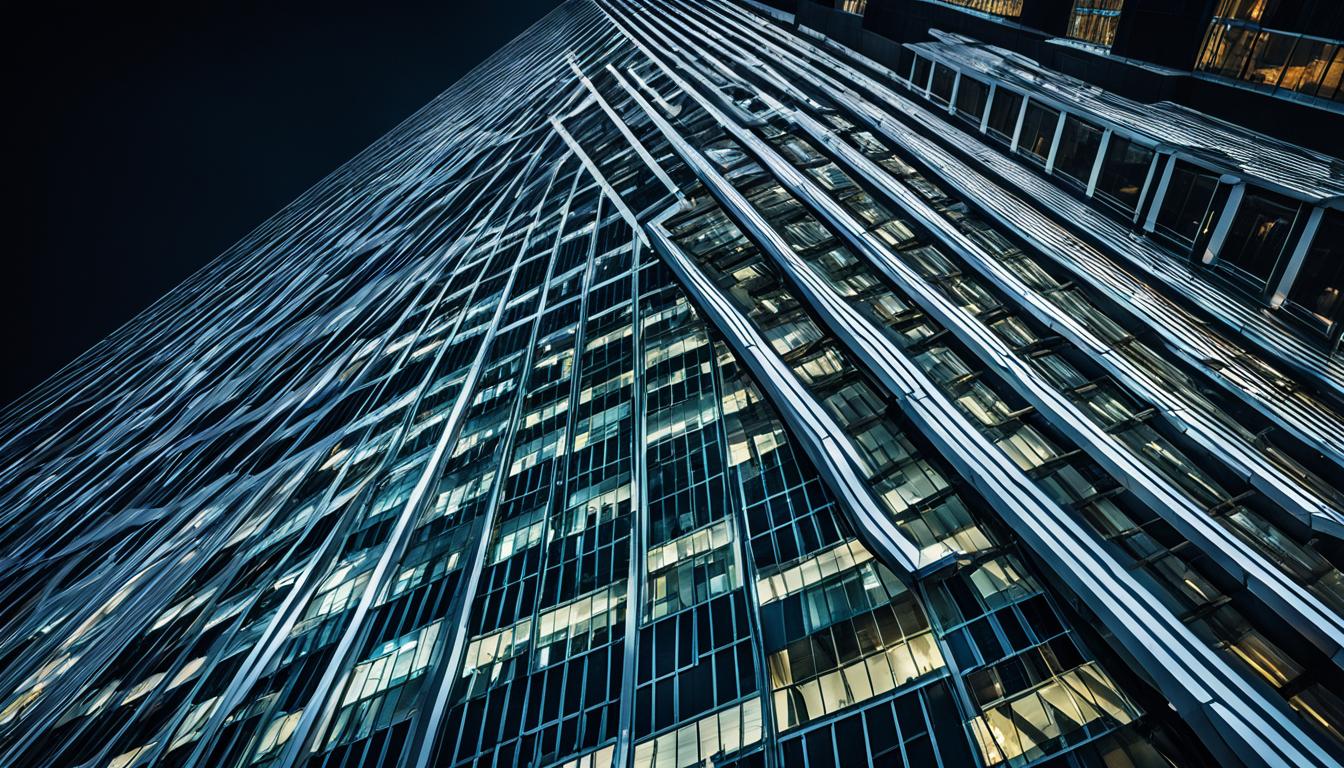Architectural photography is an ever-evolving field, constantly influenced by technological advancements, client preferences, and the creative visions of photographers. In this article, we will delve into the current trends shaping the future of architectural photography, from the contemporary to the futuristic. We will explore the digital innovations, emerging techniques, and cutting-edge practices that are propelling architectural photography to new heights.
Contemporary architectural photography is characterized by a focus on natural light, minimalism and geometry, composition and symmetry, creative staging, and the use of HDR photography. Each of these trends contributes to capturing the essence and beauty of architectural structures in unique ways, pushing the boundaries of what is possible in this art form.
Join us as we uncover the advancements and trends that are shaping the next generation of architectural photography. Discover how photographers are utilizing innovative techniques to capture breathtaking images of our built environment and witness the captivating future that lies ahead.
Key Takeaways:
- Trends in architectural photography are influenced by technological advancements, client needs, and photographer visions.
- Current trends include the use of natural light, minimalism and geometry, composition and symmetry, creative staging, and HDR photography.
- Architectural photography is moving towards more innovative techniques and approaches, pushing the boundaries of the craft.
- Future directions in architectural photography may involve the use of emerging technologies like virtual reality and augmented reality.
- There is an increasing focus on sustainability and eco-friendly designs in architectural photography.
Use of Natural Light
Architectural photography is an art form that relies heavily on the use of natural light to create stunning images that elevate the beauty of the architecture. The interplay between shadows and light, the warm glow of the sun reflecting on the facades, and the ever-changing color palette throughout the day all contribute to bringing buildings to life.
When photographing architecture, one of the best times to capture the magic of natural light is during sunrise or sunset. The soft, golden hues that bathe the surroundings create a warm and enchanting atmosphere, enhancing the overall aesthetics of the photos. Shooting at these times allows for the transformation of an ordinary building into a captivating masterpiece.
“Natural light has a transformative power in architectural photography. It adds depth, warmth, and a sense of time and place to the images, elevating the overall aesthetics of the photos.” – Sarah Johnson, professional architectural photographer
The aesthetic appeal of architectural photography is greatly enhanced when photographers take advantage of the unique qualities offered by natural light. By embracing the subtle changes in light throughout the day, photographers can capture the essence and spirit of the architecture in ways that artificial lighting cannot replicate.
With the use of natural light, photographers can highlight the intricate details of a building’s facade, showcase the interplay of light and shadows, and create a sense of depth and dimensionality. The ever-changing nature of natural light adds an element of surprise and unpredictability, resulting in visually captivating and dynamic photographs.
As the sun rises or sets, its position in the sky casts different angles of light onto the architecture, creating unique opportunities for photographers to capture compelling compositions that emphasize the building’s form, texture, and materials. The warm hues of the sunrise or sunset create a mesmerizing color palette, elevating the overall aesthetics of the photos and evoking emotions in the viewers.
Furthermore, shooting with natural light allows photographers to showcase how buildings interact with their surroundings. By capturing the way light spills into interior spaces or the way the building stands in contrast to the surrounding environment, photographers can tell a visual story that establishes a deep emotional connection with the viewer.
Overall, the use of natural light in architectural photography is essential for creating visually striking and aesthetically pleasing images. By embracing the unique qualities of daylight, and by shooting at sunrise or sunset, photographers can capture the beauty, charm, and soul of architecture in a way that artificial lighting simply cannot replicate.
Minimalism and Geometry
Minimalism and geometric compositions have emerged as prominent architectural photography trends. By capturing clean shots that emphasize the lines, shapes, and simplicity of buildings, photographers create visually striking images that showcase the beauty of architectural geometry. Playing with perspectives and utilizing graphic compositions, these photographers produce impactful photographs that resonate with viewers.
Minimalism in architectural photography involves focusing on essential elements and eliminating distractions. This approach allows the architectural details to take center stage, resulting in clean and captivating images. Geometry plays a critical role in minimalist photography, as photographers capture the precise angles, curves, and intersections that define a building’s design.
One effective technique used in minimalism and geometry is the use of negative space. By incorporating empty spaces into the composition, photographers create a sense of balance and emphasize the main subject. This technique enhances the overall visual impact of the image.
Moreover, the manipulation of perspectives adds depth and intrigue to architectural photographs. Photographers experiment with different angles and viewpoints, exploring how geometry interacts with surrounding elements. This approach creates dynamic compositions that engage the viewer’s eye and evoke a sense of wonder.
“Geometry is the language of architecture. By utilizing this language in their compositions, photographers can communicate the essence and character of a building.”
Architectural photography that embraces minimalism and geometry not only captures the essence of a structure but also highlights its unique features. The combination of clean shots and graphic compositions results in impactful images that showcase the architectural beauty.
Use of Composition and Symmetry
Composition plays a vital role in creating visually powerful images in architectural photography. By exploring principles of symmetry, asymmetry, and balance, photographers are able to capture captivating and impactful shots. Perfect symmetry can convey a sense of stability and harmony, while asymmetry adds complexity and interest to the image. The thoughtful arrangement of elements guides the viewer’s gaze through the photograph, highlighting important details and creating a sense of visual flow.
In architectural photography, striking a balance between composition and symmetry is paramount. By carefully aligning architectural elements, such as columns or doorways, photographers can create a sense of order and coherence. Alternatively, intentional asymmetry can introduce visual tension and intrigue, capturing the viewer’s attention and creating a dynamic composition.
Examples of Composition and Symmetry in Architectural Photography
“Architecture should speak of its time and place, but yearn for timelessness.” – Frank Gehry
Take a look at the image below:

This visually captivating image showcases the skilled use of composition and symmetry. The perfectly aligned facades and windows create a harmonious balance, while the vertical reflection adds an element of visual interest. The photographer’s deliberate arrangement of elements results in a powerful composition that captures the essence of the architecture.
When it comes to composition and symmetry in architectural photography, there is no one-size-fits-all approach. Photographers often experiment with different angles, frames, and perspectives to achieve their desired effect. By understanding the architecture’s unique characteristics and using composition techniques effectively, photographers can create visually stunning images that tell the story of the building.
| Composition Techniques | Examples |
|---|---|
| Leading Lines | A photo of a winding staircase leading the viewer’s eye towards the focal point of the building. |
| Rule of Thirds | An image where the main elements of the architecture are placed along the intersecting lines or at their intersections. |
| Golden Ratio | A photograph in which the architectural elements are arranged according to the Golden Ratio, resulting in a visually pleasing composition. |
| Frame within a Frame | A shot taken through a doorway or window, framing the architecture within the surrounding environment. |
By incorporating these techniques and experimenting with composition and symmetry, architectural photographers can create visually powerful images that effectively capture the essence of the buildings they photograph.
Creative Staging
Architectural photographers understand the importance of creating captivating images that go beyond simply showcasing the physical aspects of a building. Through the use of creative staging, photographers add depth, dynamism, and a sense of storytelling to their photos. By incorporating people, vehicles, or living natural elements, they highlight the interaction between buildings and their environment, creating an emotional connection with the viewer.
Imagine a photograph of a modern apartment complex. Now, picture that same image with a couple enjoying a meal on the balcony, surrounded by lush greenery, and a colorful bicycle parked nearby. The addition of these elements not only brings life to the composition but also allows viewers to visualize themselves in that space, eliciting an emotional response.
Staging creates a storytelling experience by suggesting a specific context, purpose, or lifestyle associated with the architecture. It invites viewers to imagine themselves within the captured scene, sparking their imagination and fostering a deeper connection with the showcased design.
Furthermore, creative staging offers the opportunity to emphasize the scale, proportion, and functionality of a building. By including individuals or objects within the frame, photographers can showcase the various uses and potential of the space, allowing viewers to envision themselves within the architectural context.
Overall, creative staging in architectural photography enhances the visual impact of images, effectively communicating the narrative and emotional aspects of a design. By creating a connection between viewers and the built environment, photographers cultivate a greater appreciation for architecture as a medium of human expression.
Use of HDR Photography
HDR (High Dynamic Range) photography is revolutionizing architectural photography, allowing photographers to capture a wider range of brightness in their images. By combining multiple exposures of the same scene, from the darkest to the brightest areas, HDR photography creates stunning visuals that showcase the beauty of well-lit interiors and sunny exteriors.
With HDR photography, architectural photographers can achieve exceptional details and excellent light management, resulting in images that truly capture the essence of the space. This technique is particularly effective in highlighting the nuances of architectural designs, revealing intricate textures, and showcasing the play of light and shadow.

Architectural photography always aims to present the architectural spaces in their best light. HDR photography provides the tools to accurately capture the dynamic range of brightness that exists in real-world conditions. By creating a composite image from multiple exposures, HDR photography helps eliminate the limitations of traditional photography and creates a visually striking representation of the architectural space.
| Benefits of HDR Photography in Architectural Photography | Drawbacks of HDR Photography in Architectural Photography |
|---|---|
|
|
Conclusion
The future of architectural photography is incredibly promising. As the industry continues to evolve, driven by emerging technologies and the changing needs of clients, we can expect to witness an array of innovative trends and techniques in the coming years.
New technologies, such as virtual reality and augmented reality, will play a significant role in reshaping the way we document and experience architecture. These advancements will allow us to immerse ourselves in virtual environments and explore buildings in ways we never thought possible.
Additionally, sustainability and environmental considerations will continue to shape the field of architectural photography. With a growing focus on eco-friendly designs and construction practices, photographers will play a vital role in showcasing these environmentally conscious projects and inspiring others to embrace sustainable architecture.
By keeping up with these emerging trends and future directions, architectural photography will captivate audiences and expand our visual understanding of the built environment. Through our lenses, we will highlight the beauty, creativity, and functionality of architecture, ultimately contributing to the shaping of our urban landscapes and society as a whole.
FAQ
What are the current trends in architectural photography?
The current trends in architectural photography include the use of natural light, minimalism and geometry, composition and symmetry, creative staging, and HDR photography.
How is natural light being utilized in architectural photography?
Natural light is being harnessed by architectural photographers to enhance the aesthetics of the images. The play of shadows and light, reflections, and color variations throughout the day bring buildings to life. Shooting at sunrise or sunset provides a warm and magical atmosphere.
What is the significance of minimalism and geometry in architectural photography?
Minimalism and geometric compositions are key trends in architectural photography. Clean shots emphasize the lines, shapes, and simplicity of the buildings, resulting in both aesthetic and impactful images. Photographers play with perspectives to highlight the beauty of architectural geometry.
How important is composition and symmetry in architectural photography?
Composition is crucial in architectural photography. Photographers explore symmetry, asymmetry, and balance to create visually powerful images. Perfect symmetry conveys a sense of stability and harmony, while asymmetry adds complexity and interest to the images.
What is creative staging in architectural photography?
Creative staging involves adding people, vehicles, or living elements to the photographs. This trend aims to tell a story and create an emotional connection with the viewer. It shows how buildings interact with their environment and adds depth and dynamism to the photos.
What is HDR photography and how is it used in architectural photography?
HDR (High Dynamic Range) photography combines multiple exposures of the same scene to capture a wider range of brightness. This technique is ideal for showcasing well-lit interiors and sunny exteriors, resulting in images rich in details with excellent light management.
What does the future hold for architectural photography?
The future of architectural photography is driven by emerging technologies and the evolving needs of the industry. We can expect to see even more innovative techniques and approaches, such as virtual reality and augmented reality, reshaping the way we document and experience architecture. Additionally, sustainability and environmental considerations will continue to influence architectural photography.
How Does Concept Development in Fine Art Photography Impact Architectural Photography’s Future Trends?
The concept development in photography is crucial for the future trends in architectural photography. Fine art photography’s emphasis on creativity and storytelling can influence architectural photography to become more innovative and conceptual. This can lead to a shift towards more expressive and thought-provoking architectural images in the future.
Source Links
- https://chatel-photo.fr/en/2023/10/30/5-trends-in-architectural-photography-for-2023-2024/
- https://utilitiesone.com/the-role-of-architectural-photography-in-documenting-construction-projects
- https://medium.com/@aadith.suresh.c/a-career-of-architecture-photography-for-architecture-students-e65261eb9e00




